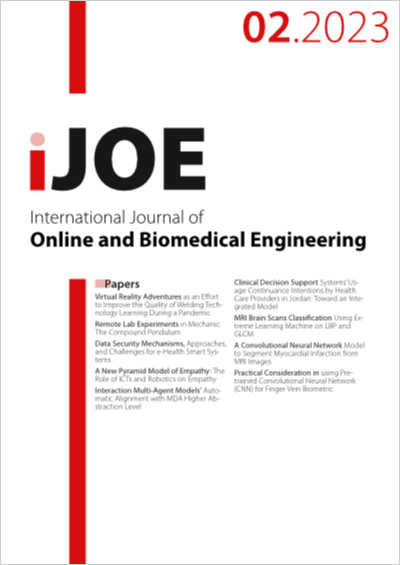Clinical Decision Support Systems’ Usage Continuance Intentions by Health Care Providers in Jordan: Toward an Integrated Model
DOI:
https://doi.org/10.3991/ijoe.v19i02.37239Keywords:
Clinical decision support systems; Information quality; System quality; Decision-making satisfaction; Alerts' fatigueAbstract
Health organizations in Jordan has just started adopting a nationwide health information system [Hakeem] including useful tools such as the clinical decision support system [CDSS]. Adopting CDSS by health care providers is not mandatory; However, the fruitful results of these tools can only be gained after adopted by the health care providers, and when they have the intentions to continue use it in the future.
The current study proposes a model that integrates factors from tow important theories of technology acceptance; Technology Acceptance Model [TAM], and Information Systems Success Model [ISSM] to predict the health care providers’ usage continuance intentions of CDSS in future. The study also checks if gender, experience, and CDSS alerts’ frequency has any moderation effects on the proposed research model. To assess the research model, data were collected from 218 participants via an online survey.
The proposed model has strongly predicted the CDSS usage continuance intentions [R2=0.486]. However, the moderators; gender, experience, and CDSS alerts’ frequency, partially moderate the proposed relationships. Conclusions: This research extends the growing literature on health information systems' adoption by building an integrated model that integrates factors from two well-established technology acceptance models, TAM and ISSM. The findings proved a significant impact of ISSM's factors [system quality, information quality, and satisfaction] on CDSS usage continuance intentions.
Downloads
Published
How to Cite
Issue
Section
License
Copyright (c) 2023 Jehad Imlawi

This work is licensed under a Creative Commons Attribution 4.0 International License.



